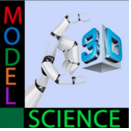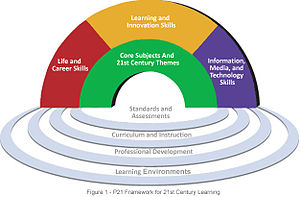Backward Design and Curriculum Integration |
MODEL3D provides a complete experience for the learner. The goal must be clear from the beginning, however. The educational strength of MODEL3D lies in the ability to enhance the curriculum and deepen the learning for all students.
A true didactic experience grows from a thoughtfully planned curriculum that begins with the end in mind. MODEL3D is an incredibly powerful tool that provides student voice and choice. Collaboration is embedded in the full process. The use of the 4 C's: Creativity, Collaboration, Communication and Critical Thinking are an integral part of this project. |
Project Based Learning - Buck Institute for Education
|
Project Based Learning is a teaching method in which students gain knowledge and skills by working for an extended period of time to investigate and respond to an engaging and complex question, problem, or challenge. In Gold Standard PBL, Essential Project Design Elements include:
|
Standards and Syllabi Creation |
Tools and suggestions for aligning MODEL3D to standards. Resources for creating syllabi.
|


